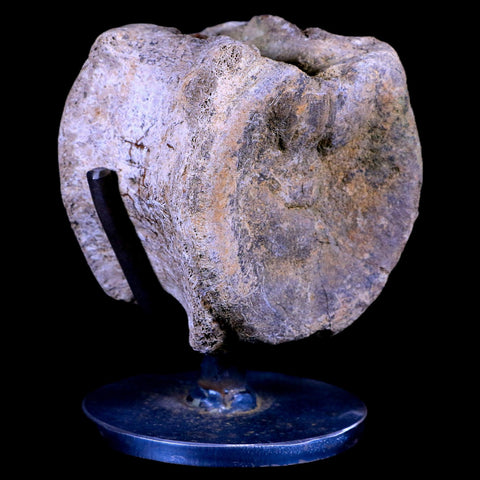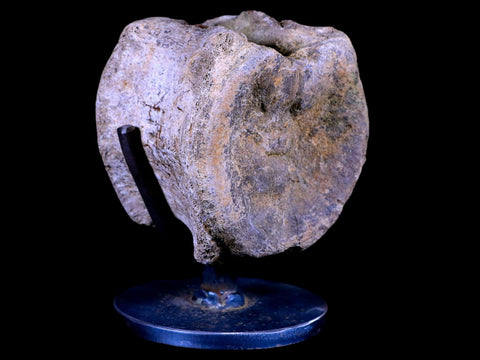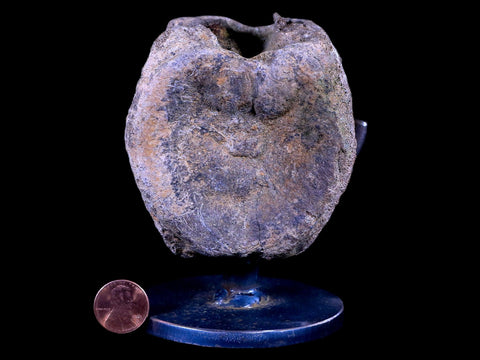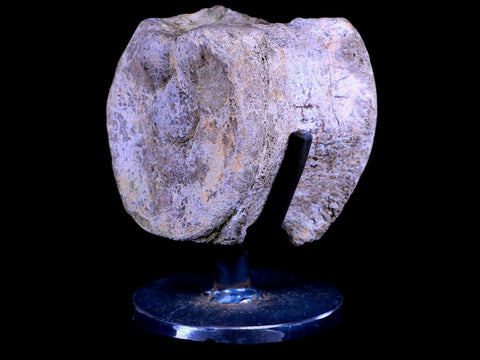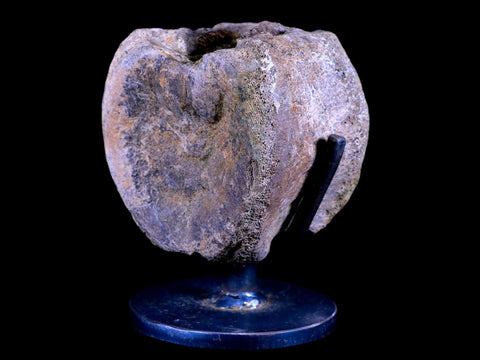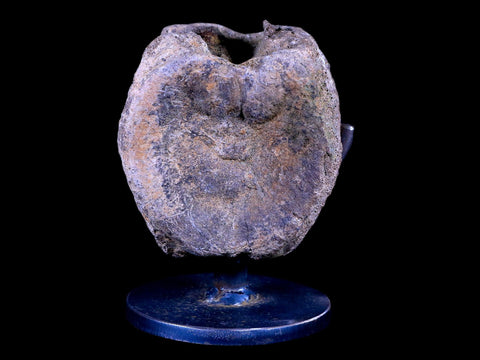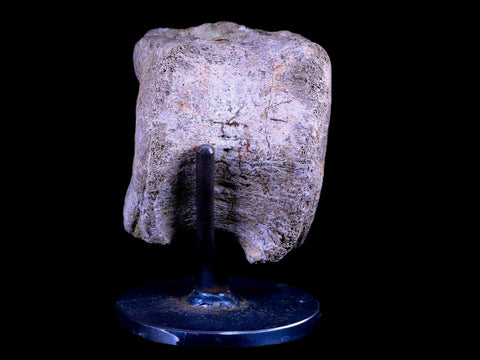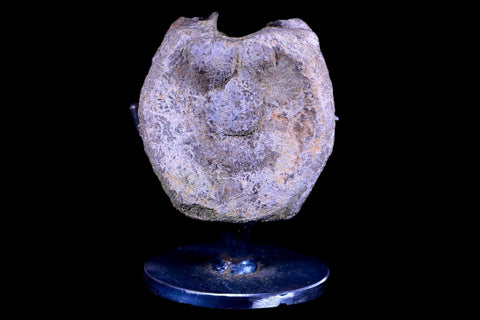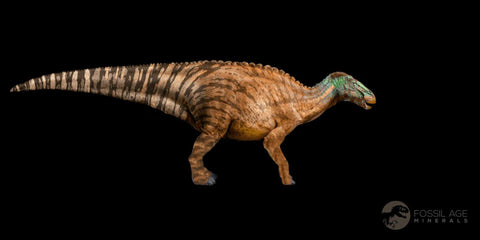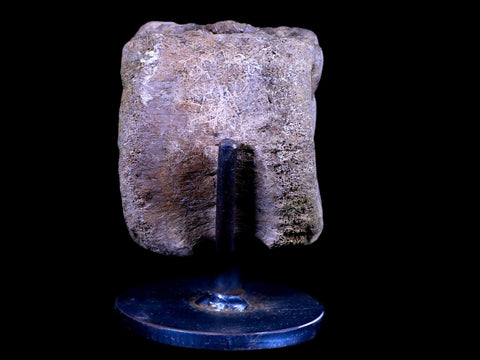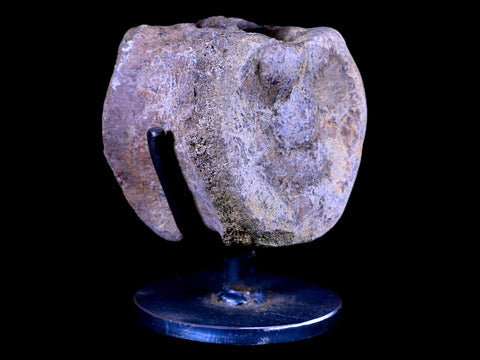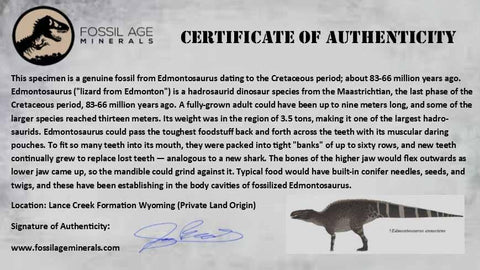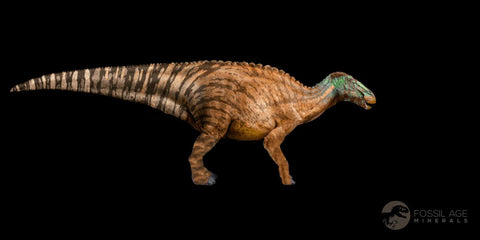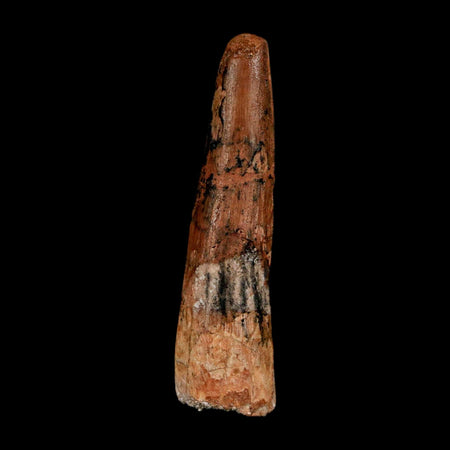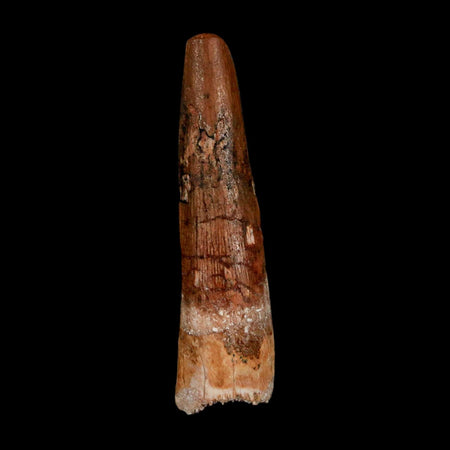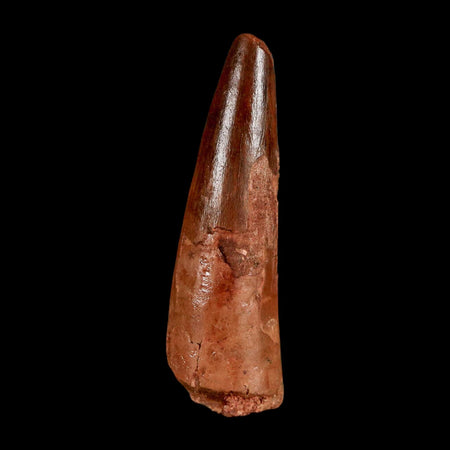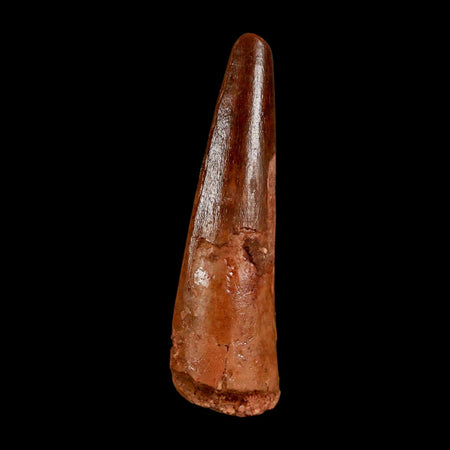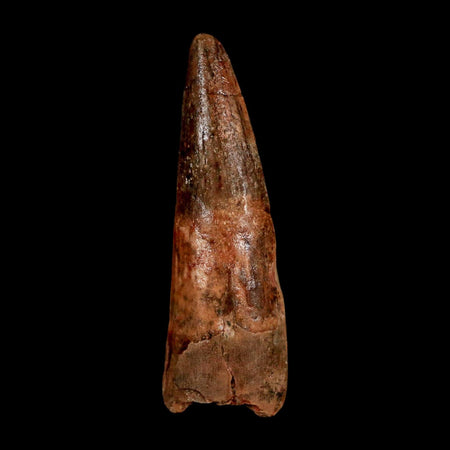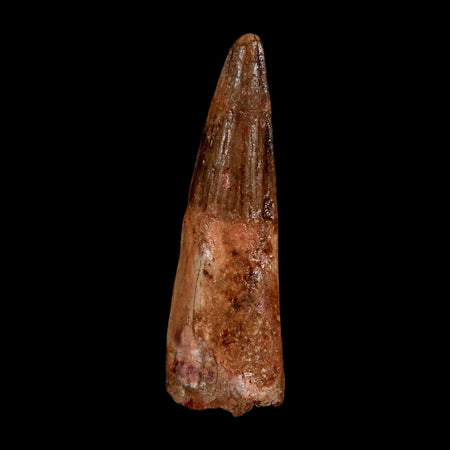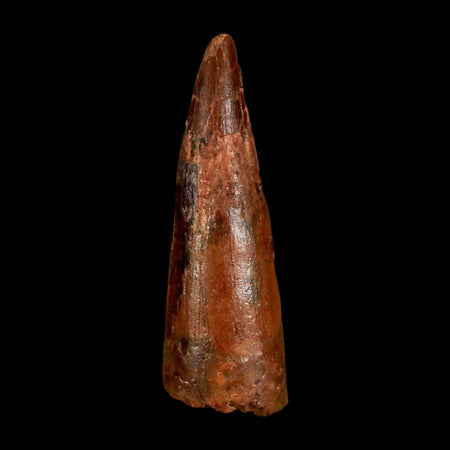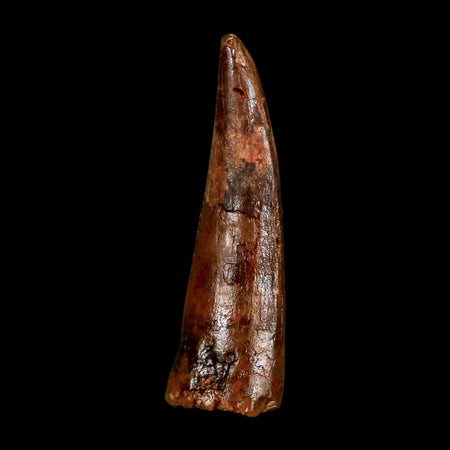3.3" Edmontosaurus Dinosaur Fossil Vertebrae Bone Lance Creek WY COA Metal Stand
Location: Hell Creek Formation, Montana (Private Land Origin)
Weight: 1 Pound 14.1 Ounces (With Stand)
Dimensions: 4.3 Inches Tall, 3 Inches Wide, 3 Inches Thick (With Stand)
Fossil Dimensions: 3.3 Inches Long, 2.9 Inches Wide, 2.7 Inches Thick
Comes with a Certificate of Authenticity.
Comes with a Free Custom Metal Stand.
The item pictured is the one you will receive.
This is a genuine fossil.
Edmontosaurus ("lizard from Edmonton") is a hadrosaurid dinosaur species from the Maastrichtian, the last phase of the Cretaceous period, 71-65 million years ago. A fully-grown adult could have been up to nine meters long, and some of the larger species reached thirteen meters. Its weight was in the region of 3.5 tonnes, making it one of the largest hadrosaurids.
Edmontosaurus could pass the toughest foodstuffs back and forth across the teeth with its muscular, daring pouches.
The Edmontosaurus' mouth housed numerous teeth arranged in dense "banks" of up to sixty rows, with new teeth continuously developing to replace those lost, much like the dentition renewal seen in sharks. The upper jaw bones would flex outward as the lower jaw rose, enabling the mandible to grind effectively against them. Fossil evidence, including remains found in the body cavities, reveals that its diet consisted mainly of conifer needles, seeds, and twigs, indicating it primarily fed by browsing trees.
The 1908 discovery in Wyoming was particularly remarkable in that paleontologists actually recovered fossilized imprints of Edmontosaurus' skin. The skin drying very quickly and fixing its shape into the mud must have left an impression. It is from these limitations that we know the skin was scaly and leathery, and the thigh muscle was under the skin of the body. This would have given the feeling that the leg left its body at the knee, and the whole thigh was under the skin. This only contributes to its resemblance to a duck. It also had some tubercles (bumps) on its neck and down its back and tail.
Edmontosaurus primarily walked on two legs but was evidently capable of moving on all fours. Its forelimbs, though shorter than the hindlimbs, were sufficiently developed to support quadrupedal locomotion. The front feet bore hooves on two digits and weight-bearing pads comparable to those of Camarasaurus, while the hind feet featured two hooked toes. The structural arrangement of the lower limb bones indicates robust muscle attachments, emphasizing significant strength in both legs and feet. With a spine that curved downward near the shoulders, Edmontosaurus maintained a low stance, enabling it to browse close to the ground. Despite its powerful limbs, the dinosaur was likely slow and possessed minimal defensive adaptations, relying heavily on acute vision, hearing, and olfaction to detect predators promptly.



